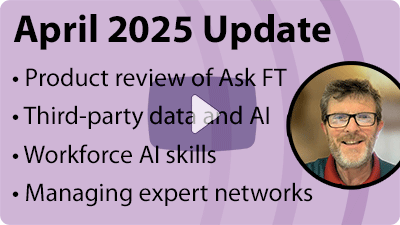 Using Prospect Research Strategies to Improve the Research Process
Using Prospect Research Strategies to Improve the Research Process
Jinfo Blog
16th October 2012
Abstract
Prospect research is used by non-profits to assess philanthropic capacity and inclination of potential donors. Rachel Bates Wilfahrt explores applications of this process and research strategy for researchers working in other industries. Resources for company information is one area in which researchers can dig deeper to enhance their research.
Item
What is prospect research? How could it help me?
Prospect research is a growing field that pieces together information to assess philanthropic capacity and inclination of individuals and organisations to donate. Non-profit organisations use prospect research as a method to best secure funding for their programs. The strategy underlying prospect research can be applied to many different contexts. However, as the perspective and process is one of identifying relevant information and synthesising it to paint a portrait of individuals and organisations, the search process in prospect research is necessarily an iterative one, utilising a variety of free and fee-based tools to identify and verify information.
Using this contextual, multi-sourced search process can be useful for researchers in many settings. In addition to identifying prospective donors, researchers could use the tools and process outlined to help an organisation identify potential board members or other non-profit leadership. Companies could use these techniques to find venture capital investors, and analysts could enhance their competitive intelligence toolkit by elevating the capacity to find information on competitors. These are just a few applications, and one critical focus of the research is diving deeper into company information.
What does this individual do?
Business researchers are already familiar with the extensive array of resources available for finding company information. However, these resources can also be used for finding people information. The first resource I always try to check is the company Web site. Naturally, the information presented will be extremely positive with respect to the company, but it could be the source of great summarised biographies noting affiliations to other organisations, including non-profits to which the individuals likely donate. Sometimes this is also the only place for finding number and names of children, particularly ones under eighteen, which are difficult to find in public records.
Numerous databases and Web sites can contribute to building a profile on an individual and his or her role within a company. Sources such as Datamonitor, Mergent, and Plunkett Research can provide detailed biographies and helpful contextual company information. Web resources such as marketvisual.com and theyrule.net can also provide information on connections among people, companies and institutions. In cases where the individual is a CEO of a larger company, it may be easy to find extensive information from just a few sources. In other cases, especially involving smaller private companies, the task at hand is much more complex, and you may come up with very little aside from a Secretary of State record or mention in a local news resource. One last step is to check social media, particularly LinkedIn, to find self-reported employment history, educational background and potentially affiliated individuals.
Figure 1: marketvisual.com’s Interactive Knowledge Map
Figure 2: A visualisation of connections on theyrule.net
FreePint subscribers can read more about leveraging prospect research techniques. Log in to view Prospect Research Strategy: Applications for All Researchers.
- Blog post title: Using Prospect Research Strategies to Improve the Research Process
- Link to this page
- View printable version
- How to create a win/loss analysis programme to do better business
Thursday, 10th May 2012 - Research: A Strategy for Raising $1 Million
Monday, 2nd February 2009
- Sales prospecting with event triggers: iSell review
Tuesday, 24th July 2012 - A look at non-profit information websites
Tuesday, 3rd January 2012
Vendor adoption of AI
Community session
23rd May 2024
AI prompting and AI-sourcing, US private companies, and Jinfo on YouTube
Blog posting
10th April 2024
April 2024 Update
YouTube video
10th April 2024
- AI prompting and AI-sourcing, US private companies, and Jinfo on YouTube
10th April 2024 - AI practical actions, prompting and outsourcing
6th March 2024 - GenAI and ESG wisdom of the Jinfo crowd
13th February 2024
- Jinfo Community session (TBC) (Community) 16th July 2024
- Jinfo Community session (TBC) (Community) 20th June 2024
- Vendor adoption of AI (Community) 23rd May 2024



